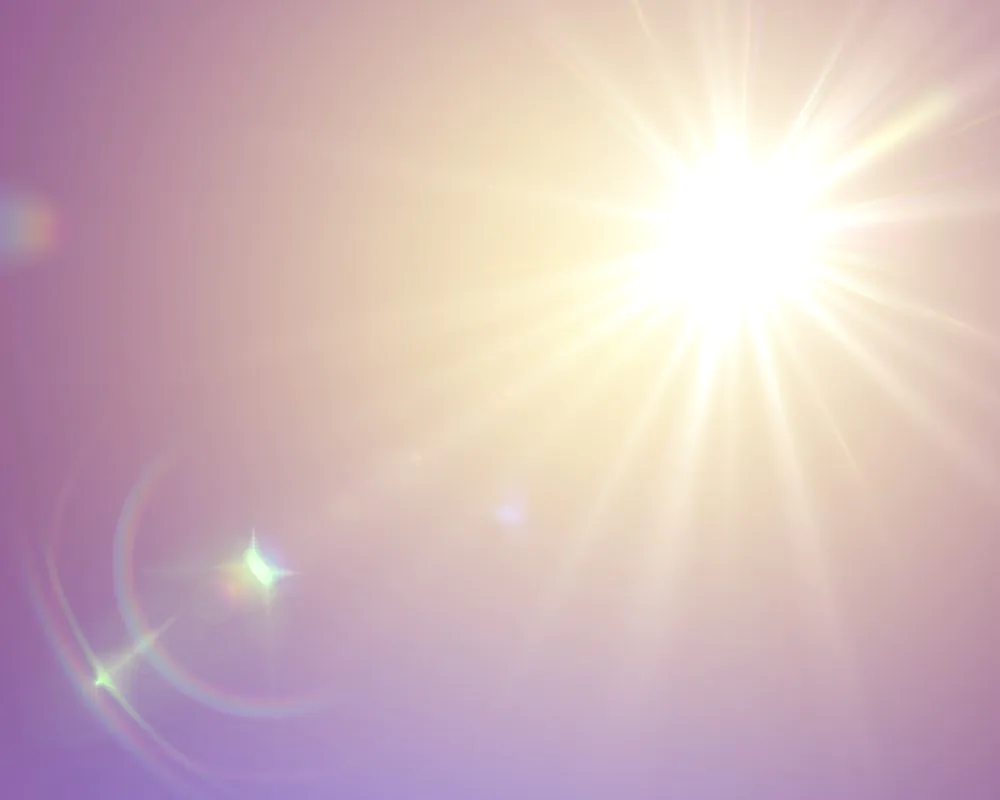
How To Remove Light Glare From Photo
Photographers frequently struggle with light glare, which can negatively affect their images’ clarity, sharpness, and aesthetic appeal. It happens when undesired reflections or excessive brightness produce distracting regions of intense light, frequently leading to a loss of detail and clarity of the overall image. Eliminating glare, whether brought on by natural or artificial lighting, reflections, or direct sunshine, can greatly improve the overall appearance of your photographs. Eventually, eliminating light glare is essential for taking aesthetically pleasing and professional-looking images.
Exploring the Factors Behind Light Glare in Photos
Light glare in photos can be caused by various factors that photographers should understand to address and prevent it effectively. By exploring the aspects behind the light glare, you can gain valuable insights into how it occurs and develop strategies to minimize its impact.
One significant cause of light glare is direct light sources. When strong or harsh light directly hits the camera lens, it can create unwanted reflections and flares in the image. That often happens when shooting outdoors in bright sunlight or using artificial light sources that are not diffused properly.
Reflective surfaces also play a role in causing light glare. Smooth and shiny surfaces such as glass, water, or objects tend to reflect light, leading to glare in the photo. Understanding how different materials interact with light can help photographers anticipate and mitigate glare issues when composing their shots.
Another factor to consider is lens flares. Lens flares occur when light enters the camera lens at certain angles, creating image artefacts. They can manifest as streaks, circles, or polygonal shapes, depending on the lens and the position of the light source. Lens hoods and adjusting the camera angle can help minimize the occurrence of lens flares.
Environmental factors, such as dust or humidity in the air, can also contribute to light glare. These particles can scatter and refract light, causing unwanted glares or a loss of contrast in the photo. Awareness of the atmospheric conditions and taking appropriate measures, such as using lens filters or cleaning the lens, can help mitigate these effects.
By understanding these factors and their influence on light glare, photographers can proactively address and minimize their presence in their photos. This knowledge empowers photographers to make informed decisions during the shooting process and take appropriate steps during post-processing to achieve visually pleasing, glare-free images.
Setting Up Your Workspace and Gathering Essential Tools
Before indulging in removing light glare from photos, it’s essential to create an optimal workspace and ensure you have the necessary tools. Setting up your environment allows you to streamline your editing workflow and achieve the best possible results.
Start by organizing your workspace in a well-lit area with neutral lighting conditions. Avoid harsh direct light that may cause glare on your computer screen. Consider using diffused or indirect lighting to create a comfortable and glare-free environment for editing.
Next, gather the essential tools for glare removal. You’ll need a reliable computer or laptop with photo editing software installed. Popular options include Adobe Photoshop, Lightroom, or other editing programs that offer advanced editing capabilities. Familiarize yourself with the software’s features, particularly those related to adjusting exposure, contrast, and highlights.
In addition to the software, invest in a high-quality monitor or display that accurately represents colours and tones. Calibrating your monitor ensures consistent colour accuracy throughout your editing process, minimizing the risk of overlooking glare or other image imperfections.
Lastly, consider using additional tools, such as a graphics tablet or stylus, for precise edits and adjustments. These devices provide greater control over your editing process, allowing you to target specific areas affected by glare precisely.
Preparing your workspace and gathering the necessary tools create an environment conducive to effective glare removal. This thoughtful setup, combined with the right software and hardware, will enhance your ability to accurately identify and eliminate light glare from your photos, ultimately leading to visually stunning and glare-free results.
Manual Glare Removal Techniques
Manual editing techniques offer precise control and flexibility when removing light glare from photos. You can apply a range of manual glare removal techniques during post-processing to achieve optimal results. These techniques involve using selection tools, adjusting exposure and contrast, employing clone or healing brushes, and making targeted adjustments to specific areas affected by glare.
Selection Tools: Start by selecting the affected area using tools like the lasso, marquee, or magic wand tool, depending on the complexity of the glare. Refine the selection by feathering the edges slightly for a smoother transition between the corrected and surrounding areas.
Exposure and Contrast Adjustments: Use exposure and contrast adjustments to balance the image’s brightness and overall tonal range. Reduce the highlights and increase the shadows to recover details in the glare-affected areas. Fine-tune the adjustments until the glare is minimized while maintaining a natural-looking result.
Dodge and Burn: This technique helps selectively lighten or darken specific areas of the image. Utilize a soft brush set to a low opacity and gently paint over the glare, gradually building up the effect to achieve a flawless blend with the surrounding areas.
Clone and Healing Brushes: Clone and healing brushes are powerful tools for removing glare in localized areas. With the clone stamp tool, sample a nearby area without glare and carefully paint over the affected region, blending it with the surrounding pixels. The healing brush tool can also seamlessly remove glare by automatically blending the selected area with the surrounding pixels.
Adjustment Layers and Masks: Utilize adjustment layers and masks to make targeted edits to glare-affected areas. For example, you can create a Curves adjustment layer and use a mask to apply the adjustments only to the glare-affected regions. That controls the tonal adjustments while keeping the rest of the image unaffected.
Gradient Filters and Vignettes: Gradient filters or vignettes can effectively reduce or mask light glare. Apply a gradient filter over the glare-affected area to darken or desaturate it, gradually blending with the rest of the image. Alternatively, add a vignette around the photo’s edges to draw attention away from the glare and towards the central subject.
Remember to adjust gradually and assess the overall impact on the image as you go along. Regularly zoom in and out of the photo to ensure the edited areas blend naturally.
Utilizing Automated Glare Removal Tools
In addition to manual editing techniques, several automated glare removal tools are available that can simplify the process and save time. These tools utilize advanced algorithms and image processing techniques to detect and remove glare from your photos automatically. Some popular options, their features and advantages are as follows:
Glare Removal Filters in Photo Editing Software: Many applications, such as Adobe Photoshop and Lightroom, offer built-in glare removal filters or plugins. These filters use intelligent algorithms to analyze the image and automatically reduce or eliminate glare. They often provide adjustable settings to fine-tune the level of glare removal based on the specific image.
Dedicated Glare Removal Software: Specialized software programs are designed for glare removal. These tools employ sophisticated algorithms and machine learning techniques to detect and remove glare from photos. They often provide user-friendly interfaces and batch processing capabilities, allowing you to simultaneously apply glare removal to multiple images.
Artificial Intelligence (AI) Based Glare Removal: Artificial intelligence-based solutions use machine learning and deep neural networks to automatically detect and eliminate glare from images. These tools can intelligently analyze the image and distinguish between glare and desired details, ensuring accurate and targeted glare removal. They continuously improve their performance by learning from vast datasets of images.
When using automated glare removal tools, evaluating the results and making any necessary adjustments carefully is important. While these tools can be highly effective, they may only sometimes produce the desired outcome, particularly in complex or challenging glare scenarios. Therefore, using them as a starting point is recommended and then fine-tuning the results using manual editing techniques for optimal control and customization.
By utilizing these automated glare removal tools, you can enhance your efficiency and achieve impressive results in glare reduction. Experiment with different software options and find the one that suits your editing style and delivers the desired outcomes for your photos.
Tips for Glare Prevention
Preventing glare in your photos starts with proactive measures during the photography process. Some valuable tips to help you minimize glare are:
Use a lens hood: Attach a lens hood to your camera lens to block direct light from entering at angles that may cause glare.
Position yourself strategically: Adjust your shooting angle or position to minimize the impact of direct light sources or reflective surfaces.
Use a polarizing filter: A polarizing filter can help reduce glare by selectively blocking certain light waves. You can experiment with rotating the filter to achieve the desired effect.
Diffuse light sources: When shooting with artificial lighting, use diffusers or modifiers to soften and spread the light, reducing the likelihood of glare.
Clean your lens: Dust or smudges on your lens can contribute to flare or unwanted reflections. Regularly clean your lens to ensure optimal clarity.
Conclusion
Removing light glare from your photos can significantly enhance their visual impact and overall quality. Following the step-by-step techniques discussed in this blog, you can tackle glare-related challenges during the shooting and post-processing stages. Remember, learning the art of glare removal takes time, so keep honing your skills and enjoy creating stunning, glare-free images.




